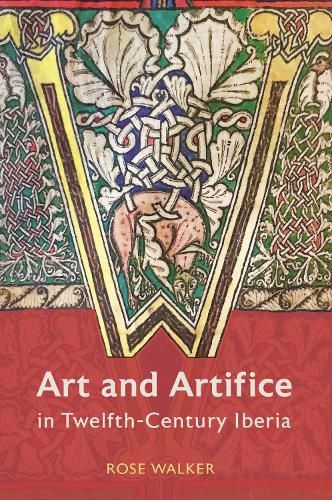Readings Newsletter
Become a Readings Member to make your shopping experience even easier.
Sign in or sign up for free!
You’re not far away from qualifying for FREE standard shipping within Australia
You’ve qualified for FREE standard shipping within Australia
The cart is loading…






"This innovative, wide-ranging and erudite book illuminates the sophistication of artistic exchange at this time and place. " Costanza Beltrami, Stockholm University.
Sculptors and painters produced exceptional, and sometimes eccentric works of art in the middle decades of the twelfth century in Iberia. The high-level artistic expertise needed to produce such works could be gifted, loaned, and even stolen in the same way as other precious items. It could be moved, like a commodity, across networks forged by reforming churchmen and rulers that traversed the Pyrenees and the Peninsula. Much of this sculpture and wall-painting shows an ability to play with the different repertoires that emerged from these established routes of exchange.
The pilgrimage roads of the Codex Calixtinus have had a strong imaginative pull and even been invoked to explain such artistic production. By contrast, this book argues that the more playful and satirical aspects of that manuscript - the pseudonyms, exaggerated claims, and pointed selections - resonate not only with a wider culture of forged charters and re-invented institutional histories but also with the imaginative, eclectic, and sometimes ludic art of these decades. This art encompasses sculpted church facades, painted interiors, illuminated missals and cartularies, as well as carved Atlas figures that encapsulate the complex status of the artists who made them.
$9.00 standard shipping within Australia
FREE standard shipping within Australia for orders over $100.00
Express & International shipping calculated at checkout
"This innovative, wide-ranging and erudite book illuminates the sophistication of artistic exchange at this time and place. " Costanza Beltrami, Stockholm University.
Sculptors and painters produced exceptional, and sometimes eccentric works of art in the middle decades of the twelfth century in Iberia. The high-level artistic expertise needed to produce such works could be gifted, loaned, and even stolen in the same way as other precious items. It could be moved, like a commodity, across networks forged by reforming churchmen and rulers that traversed the Pyrenees and the Peninsula. Much of this sculpture and wall-painting shows an ability to play with the different repertoires that emerged from these established routes of exchange.
The pilgrimage roads of the Codex Calixtinus have had a strong imaginative pull and even been invoked to explain such artistic production. By contrast, this book argues that the more playful and satirical aspects of that manuscript - the pseudonyms, exaggerated claims, and pointed selections - resonate not only with a wider culture of forged charters and re-invented institutional histories but also with the imaginative, eclectic, and sometimes ludic art of these decades. This art encompasses sculpted church facades, painted interiors, illuminated missals and cartularies, as well as carved Atlas figures that encapsulate the complex status of the artists who made them.